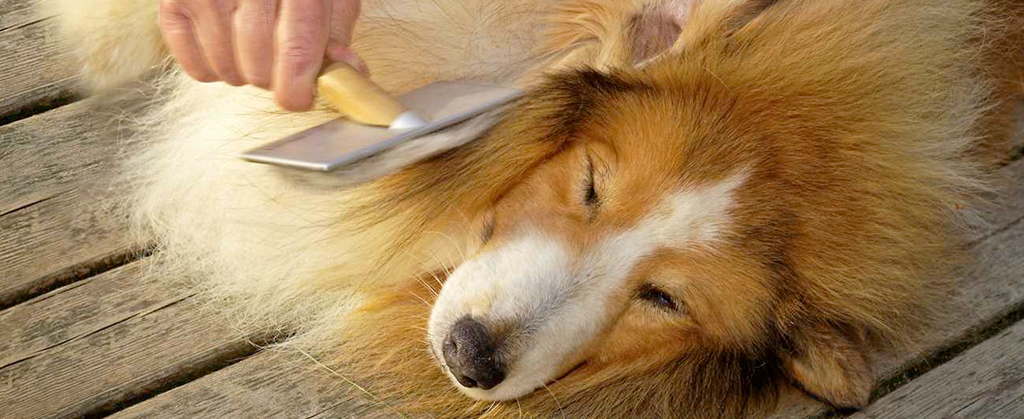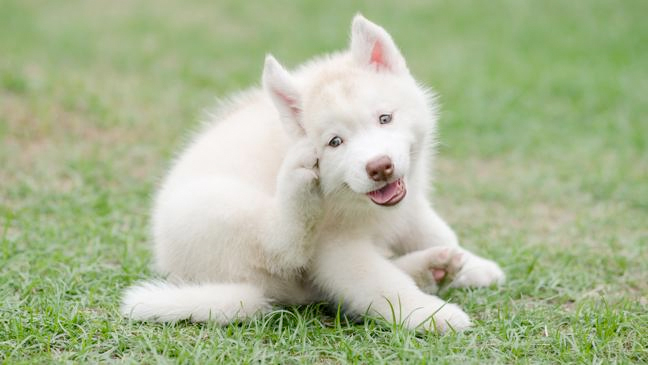
should i shave my dogs matted fur?...
- 28735
The new groomer wants to shave your dogs coat right down because she says it’s too matted and it’ll hurt to brush it out. The old groomer used to brush it out, and she always said your dog was fine. It’s cold outside, and you want your dog to have enough hair to stay warm, but you also want to do the very best thing for your pet, so what do you do?
Well, it depends on a number of things. Firstly, you and / or your groomer need to assess the tolerance your dog has for brushing. If your pet likes being brushed, she may tolerate the de-matting process, or she may not. If she does not like being brushed, de-matting will probably not be the best solution for her. Many dogs fall between these two extremes, and you just need to try to find out.
Secondly, the extent of the matting needs some consideration. There are two things you need to look at… 1) how much of your dogs body has matted fur on it? and 2) how close (and tight) are the mats to your dogs skin? A skilled groomer can run her hands over your dogs coat, and very quickly determine these things by feel alone, because her hands are accustomed to what a coat should feel like. You can do this too, with the help of a metal toothed comb (plastic teeth bend too easily), and perhaps your favourite pair of reading glasses. First, know where to look. Areas of friction will start to mat first, so where her ears rub against her head, armpits, where she chews her feet, and under her collar or harness. Part the hair, and you should see healthy skin, and smooth hair shafts growing from it. If you can’t see skin, and the hair is bunched up, it’s a mat. You should be able to take a fine toothed comb (wide teeth for Poodles and other breeds with very tight curls), and completely comb through the hair, root to tip, over your dogs entire body. When your comb gets stuck, you found a mat!
Now, de-matting can be done a number of ways, with various tools. If there are just a few small mats on your dog, this usually is not a problem, with the exception of a very few dogs who have especially sensitive skin. A caring, patient, and skilled groomer can remove these gently, without causing pain or stress to your loved one. (Please note, this procedure takes time, skill, and above all, patience. If your groomer isn’t applying any extra charges, you may want to ask yourself why.) Another option is to spot shave these mats. Once again, a skilled groomer may be able to hide these shaved areas with the surrounding fur.
If the mats cover large areas of your dog, or even her whole body, simply having them can be quite uncomfortable for your pet. But not just that. Mats pose a health risk for a number of reasons. If your dog has acquired any sort of skin irritation, either due to an allergic reaction, an injury, or something sharp caught in her fur like a twig or thorn, you won’t know about it in order to help her, because you can’t see it. The irritated skin can’t heal well because air can’t circulate properly, and it can’t be kept clean. Additionally, if your dog loves to swim, or she has frequent baths, the coat takes much longer to dry, especially against the skin, which can cause further problems. This moist environment encourages bacteria, fungus, and yeast growth, as well as exacerbating any irritation which may already be there. One of the most unpleasant consequences of a matted coat, is that it is a perfect environment for fleas to congregate and multiply, and nobody wants to invite fleas to the party. In summary, these effects can be quite taxing to your dogs immune system, compromising her health, and making her susceptible to other health issues. Regularly grooming your dog is a very important part of keeping her healthy.
So, should you, or shouldn’t you, shave your dog?
Well, often, the best choice is the lesser of two evils. Generally speaking, shaving mats is more humane than brushing, especially for large matted areas. If you do choose to have your pets mats brushed out, ask your groomer if it’s okay if you watch. If you’re not welcomed to do so, you may want to reconsider either your choice of haircut, or your choice of groomer. If you opt for shaving the coat off, you’ll want to put a cozy sweater or coat on your pet before venturing outside. Fortunately, these are widely available, with increasing selections of locally made, eco-friendly fabrics. So, don’t feel sorry she has a very short haircut; be happy she will be far more comfortable, and one step closer to optimum health.
... Read More


